During the ‘60s, Alcatraz prison earned a reputation as the most isolated and remote prison on the planet. The location of the island made it impossible to ever escape. In all of history, 36 inmates tried to escape, but none of them survived or succeeded. However, this was not the case in June 1962. Three inmates tried to get out of “The Rock” by jumping into the infamously cold waters of the San Francisco Bay! They were never seen again, and no one knew what happened until the police got a mysterious letter in January 2018…
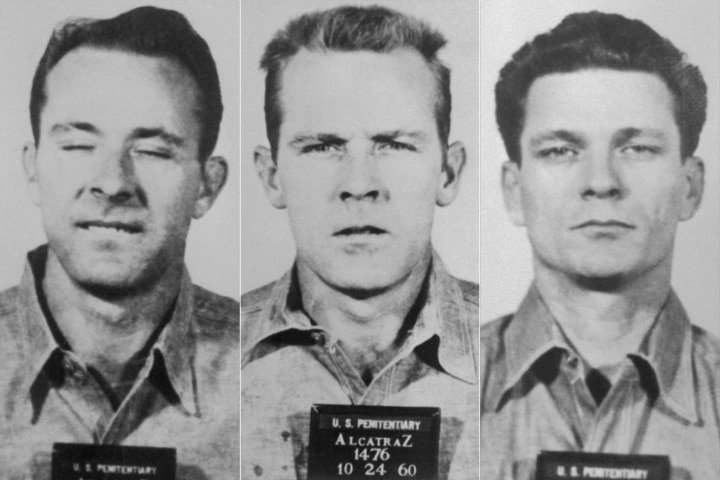
They Said No One Could Escape From Alcatraz But These Men Did Exactly That
Escaping The Rock
Alcatraz is the place where they sent the worst of the worst. It was a maximum-security prison designed to keep the most notorious criminals away from other people. Three prisoners somehow managed to evade the advanced security functions there. The Alcatraz escape has gone down in American history as a famous unsolved crime. Local officials believe that they drowned, but there are clues that suggest they actually survived and got away. In 2018, one specific letter led the FBI to reopen this investigation.

Escaping The Rock
Meet Frank Lee Morris
Frank Lee Morris has earned a reputation for his great mind. At the age of 11, he became an orphan and started to move from one foster home to the next. He learned independence and self-reliance during those years. However, he had a penchant for getting into trouble. When he was 13, he got convicted of a crime for the first time. Despite everything, no one could have predicted that he would be the mind behind the greatest escape attempt from Alcatraz prison.
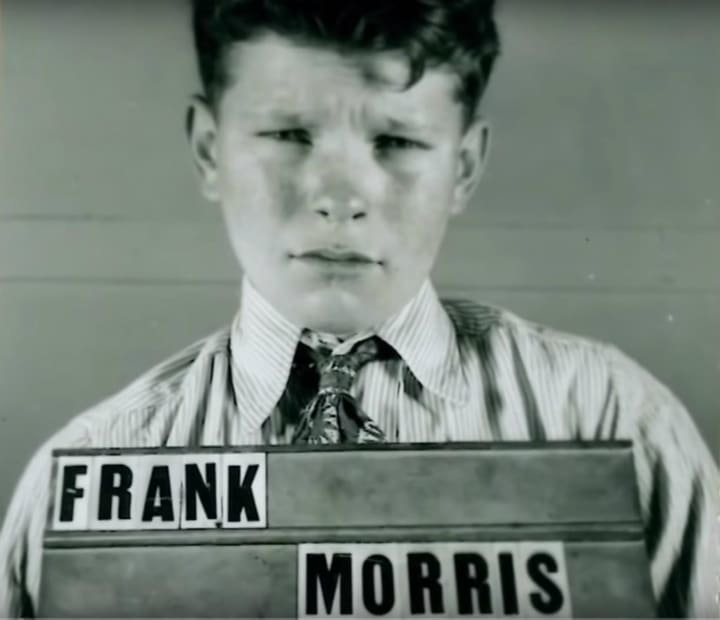
Meet Frank Lee Morris
His First Escape
As he grew up, Frank Lee Morris continued to take part in criminal activities. He spent some time in prisons all over the country, even ending up in the “Alcatraz of the South” in Louisiana. He had been serving a decade for bank robbery when he escaped from the state penitentiary. He evaded the police for nearly a year until they captured him in the middle of yet another robbery. They arrested and put him away… this time, he was headed for Alcatraz.

His First Escape
The Anglins
Frank Lee Morris knew that it is impossible to conduct a prison break on his own. He had to find a team to help him with this endeavor. When he got to The Rock, he teamed up with Allen West and John and Clarence Anglin. The Anglin brothers came from Georgia but grew up in Florida. They had seasonal farm workers for parents, so everyone in the family went around the country to look for farming jobs. Every June, the family would head North and pick cherries.

The Anglins
Thick As Thieves
John and Clarence had been attached at the hip ever since they were kids. Quite literally, they were as thick as thieves! When they were little, the entire family went up North to pick cherries. Sometimes, they would make it to Michigan. Back then, the brothers liked to swim in Lake Michigan and developed excellent swimming skills. Did they know these abilities were going to be important in the future? The two started to rob banks together when they were in their early twenties. They got arrested in 1956!
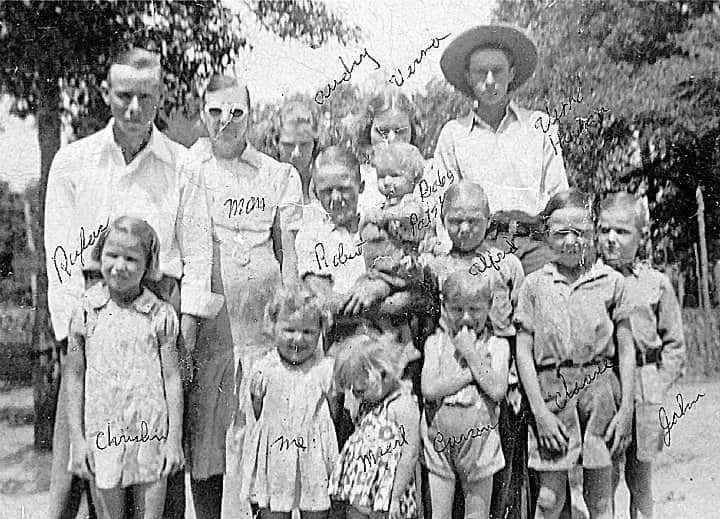
Thick As Thieves
A Group Of Four
They were incarcerated at the Atlanta Penitentiary. The brothers tried to escape numerous times. In the end, the people in charge thought they were better off in a maximum-security prison like Alcatraz. They befriended Frank Lee Morris and Allen West during their time together. The four of them had lots of experience in escaping or trying to escape in the past. They pooled their resources and began to draw up a plan to do the unthinkable. They were going to escape from Alcatraz.
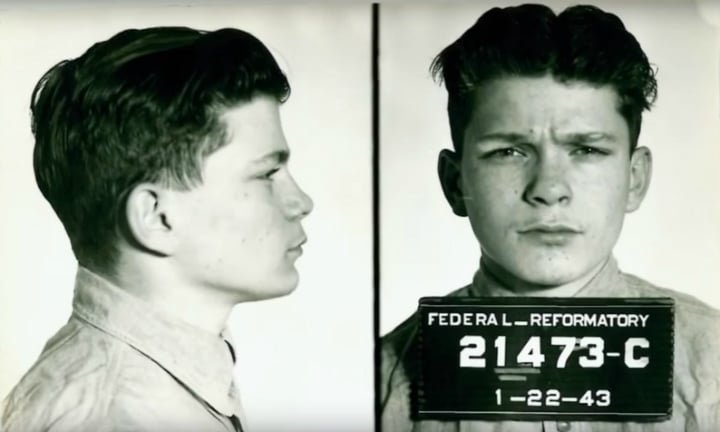
A Group Of Four
Pulling It Off
The plan they drew up was not complicated, but could they actually pull it off? For one thing, they needed perfect coordination if they wanted to make this work. It was not the first time that inmates tried to escape. In fact, more than 30 people tried to escape from the Rock before them. None of them succeeded.

Pulling It Off
How It Started
All four team members had spent time at the Atlanta penitentiary at some point. It was possible that they already knew each other even before they met up at the Rock. The Anglin brothers certainly met Frank Lee Morris in the past. The four members of the team lucked out by having adjoining cells in Alcatraz, which helped make planning easier. Could they pull off something this big?
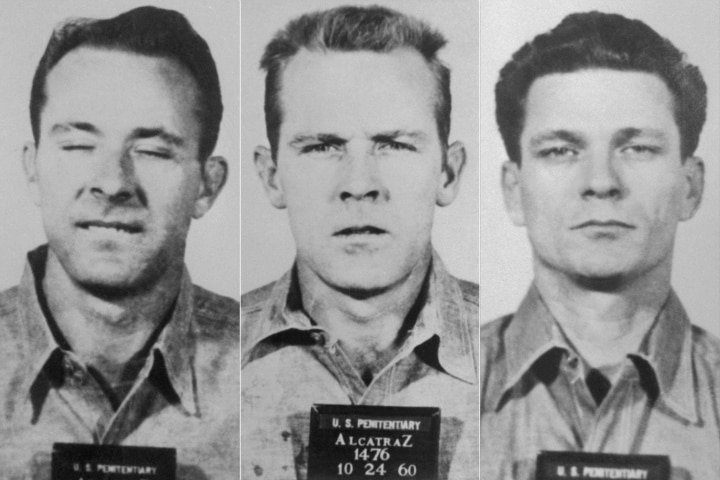
How It Started
To Their Advantage
In those days, Alcatraz was also a factory on top of being a prison. The sentences handed out to inmates included work. This is the reason they had access to a number of materials back then. Alcatraz inmates made furniture, shoes, and clothes for the US military back then. The team was made up of non-violent offenders, which is considered a rarity in Alcatraz. This gave them the edge of being less suspicious than the others.
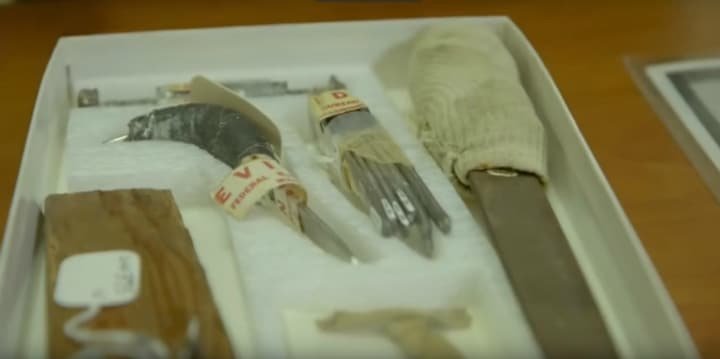
To Their Advantage
Making The Props
They started to set the plan into motion little by little. It was hard, but they had a brilliant plan. They did not only plan to escape this fortress but wanted to leave dummies in their place! It was not enough to escape Alcatraz because they needed to find a way to leave the island. Back then, prison guards were instructed to shoot on sight. As you can see, the men knew what they were up against.
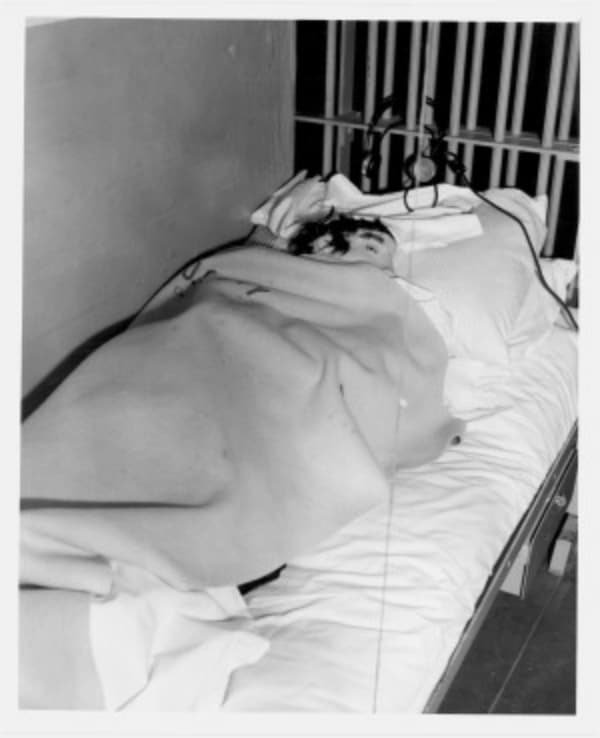
Making The Props
Their Assignments
The members of the team were assigned different tasks. However, they each needed to look for a way to get out of their cells when it was time for them to escape. The Anglin brothers were placed in charge of making the fake heads they would leave in their beds. They were made roughly from toilet paper, soap wax, and real human hair from the barber shop in the prison! Morris was in charge of creating an accordion-like instrument that could inflate a raft and life vests.

Their Assignments
Time To Dig
The team needed to work together to craft tools they can use to dig out of the cells and unscrew the bolts on the vents. They made wrenches and picks from items like cafeteria spoons and workshop wood. Every single day, they worked from 5:30 PM until 9 PM. They chipped away at their cells to make holes that they could fit through! They also removed the vents in the prison cells and made the holes bigger.
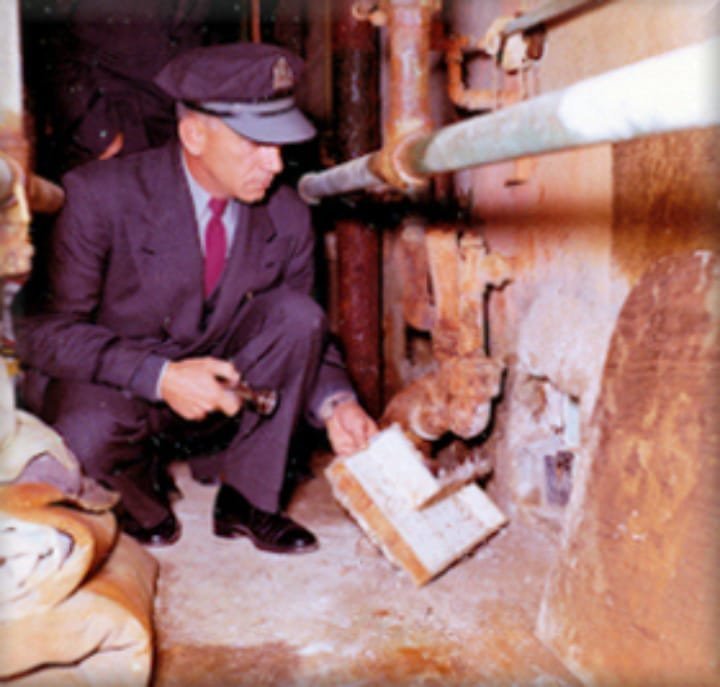
Time To Dig
Terrible Foundations
They got lucky because the prison was in such bad shape during their time there. The walls were weak and crumbly. The saltwater running through the pipes had been deteriorating over time and leaking into the walls. The salt eventually wore down the cement! The authorities at the prison kept the water warm to prevent giving the prisoners immunity to the cold temperatures of the icy San Francisco Bay.
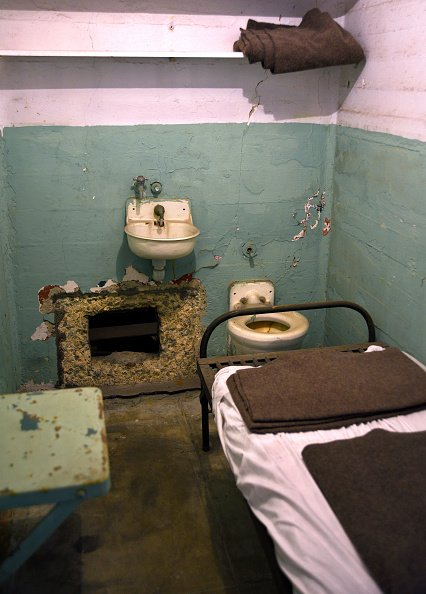
Terrible Foundations
Make Some Noise
But how did they manage to do this without making anyone notice? Apparently, the inmates used prison reform to their benefit. In the ‘60s, they let inmates have an hour of music every day. It was hard to hear anything over the disharmony that happened during that time! Morris played an accordion loudly to cover up the racket made by chipping the cement and banging at the walls. They eventually learned that there was an unguarded utility corridor at the back of the cells.
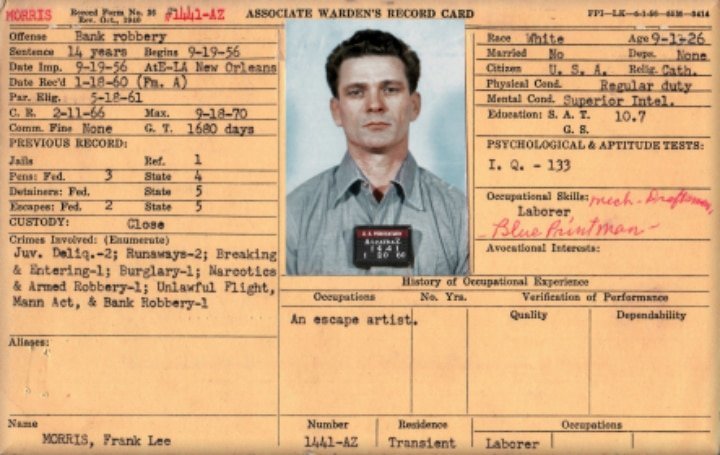
Make Some Noise
Up Up And Away
This utility corridor was unguarded and had bars, not unlike those you find at the jungle gym. If the prisoners made holes wide enough to enter, they would be able to climb all the way to the roof! After this, they just needed to hope for the best. They had to use a large shaft for roof access. They could not believe it when they learned that the shafts were mostly sealed off using cement. Luckily, they chanced upon an unsealed shaft that they then pried open with a homemade wrench.
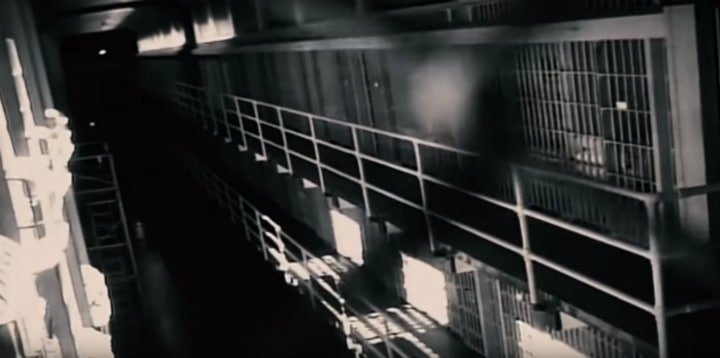
Up Up And Away
Prison Break
Morris and the Anglin brothers managed to break down the walls of their prison cells by May 1962. The holes were just big enough for them to crawl through. They created a raft and life vests by gluing and stitching raincoats together. They used over 50 raincoats for these things! They were important if they wanted a chance of surviving the cold waters of the San Francisco Bay.
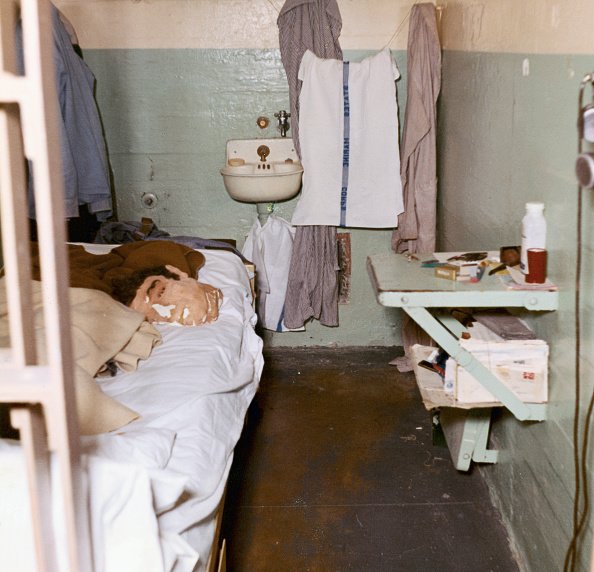
Prison Break
The Plan
The gang was ready, so the only thing they needed to do was wait for Allen West to finish his own hole. They only had to wait for the right moment to make their escape. In June 1962, they received the signal to carry out the plan, but it did not go as planned. West finished carving out his hole on the 11th of June in 1962. He informed the three other team members, but none of the expected what happened next.

The Plan
Set In Motion
They anxiously waited for the lights to go out before they could start. Could they really escape from the Rock? They knew the risks, but they were not afraid to put themselves in danger. If this was going to be what it takes to escape, so be it. Their hearts were pounding at the thought of making it out of Alcatraz. When the lights finally went out, they put up their fake dummies and began to go through the holes.
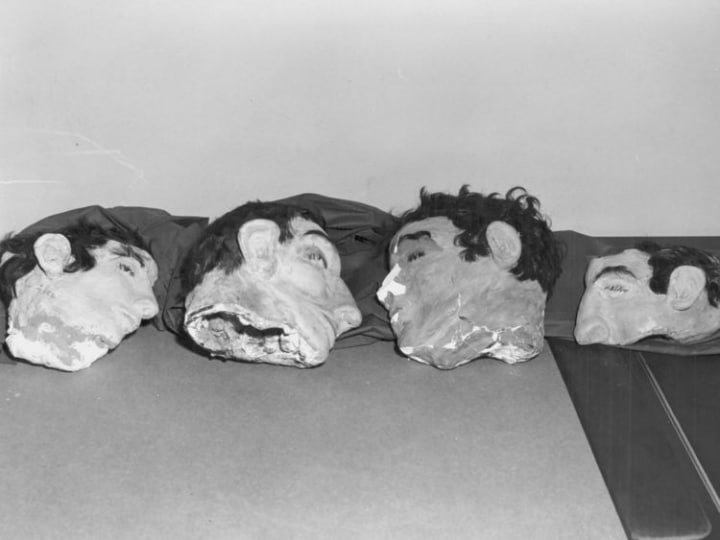
Set In Motion
An Unfortunate Mistake
The Anglin brothers and Morris managed to go out of the cells easily. However, Allen West could not get out! He told the others that he probably miscalculated the size of his hole. Frank Lee Morris helped him chip it off some more from the other side of the hole. However, there was nothing to be done about it. At around 9:30 PM, they decided that the only thing to do was to leave him behind.
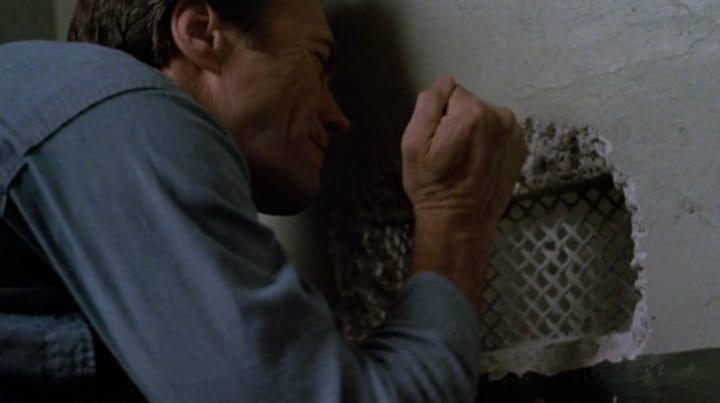
An Unfortunate Mistake
Leaving Him Behind
We are sure it was hard for them to leave West behind after working on this for such a long time. Sadly, they did not have many options. They did not want to risk the attention of the guards by making some noise. Reluctantly, West had to take one for the team. The other three started to make their way to the roof. Using the plumbing pipes in the corridor, they climbed 30 feet to reach the shaft.

Leaving Him Behind
Climbing Down
The climb to the roof came fairly easily for the three men. After this, it was time to cross more than 100 feet to start the descent. They climbed down 50 feet along the side of the building to get to the ground. They made their way right beside the showers and snuck past the guards on duty. They needed to keep their wits about them if they wanted to succeed. Finally, they got to the shore. It was there that they planned to inflate the life vests and the raft!
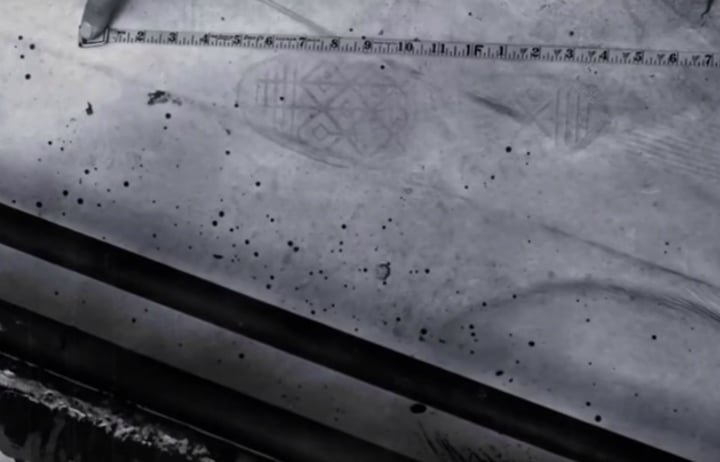
Climbing Down
A Wake-Up Call
Clarence Anglin, John Anglin, and Frank Lee Morris were never seen again after that day. They went out to the sea on their makeshift raft at around 11:30 PM. The prison authorities only noticed that they were missing the following morning. All the inmates woke up to the sound of blaring sirens. They were confused because they did not think anyone would try to escape! They all thought it was impossible, but they later found out that three men managed to do the impossible.
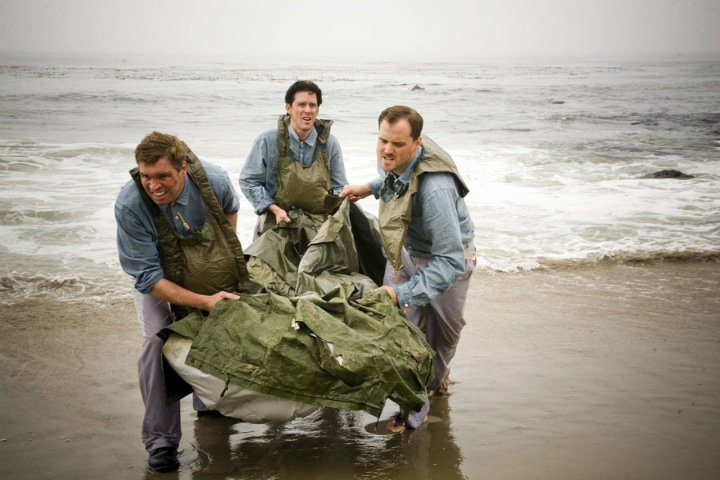
A Wake-Up Call
Not Giving Up
Allen West did not give up, apparently. They already left him behind, but he kept chipping at the hole to squeeze through. He succeeded! He was thrilled to leave the cell and follow the others. After he left the cell, he made his way to the rooftop. However, the three men were nowhere in sight. He did not have a raft on him nor anyone to help him. He had two choices: swim or return to his cell.
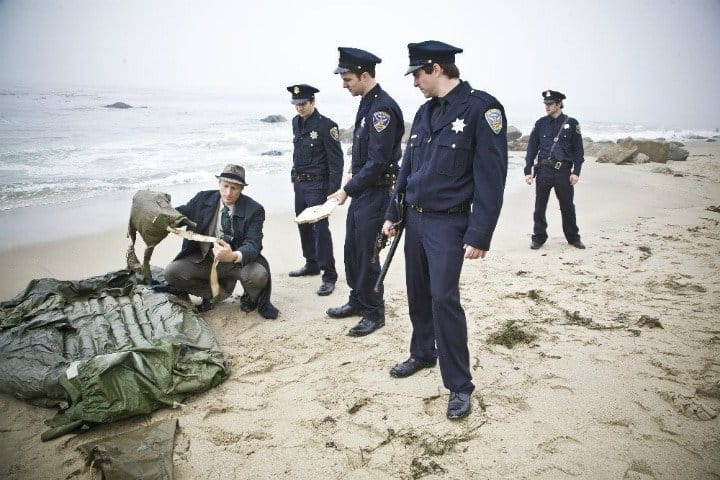
Not Giving Up
Spilling His Guts
He returned to his senses and made the decision to just return to his cell. He knew that they would discover the escape in the morning. The authorities searched every inch of the prison after they raised the alarm the following morning. West did not have a choice but to fully cooperate with them. He told them what he knew, but we do not know if he actually spilled everything! He told them that the plan was to go to Angel Island, steal a car, get some clothes, and split up.

Spilling His Guts
Not Consistent
They had a problem with this confession. There were no cars reported missing or stolen in Angel Island as far as 12 days later. This means that West lied to them or they landed elsewhere and changed their plans. During the confession, West told them that he came up with the escape plan. The authorities sought the help of the FBI, who then opened an investigation to find out if the inmates survived.
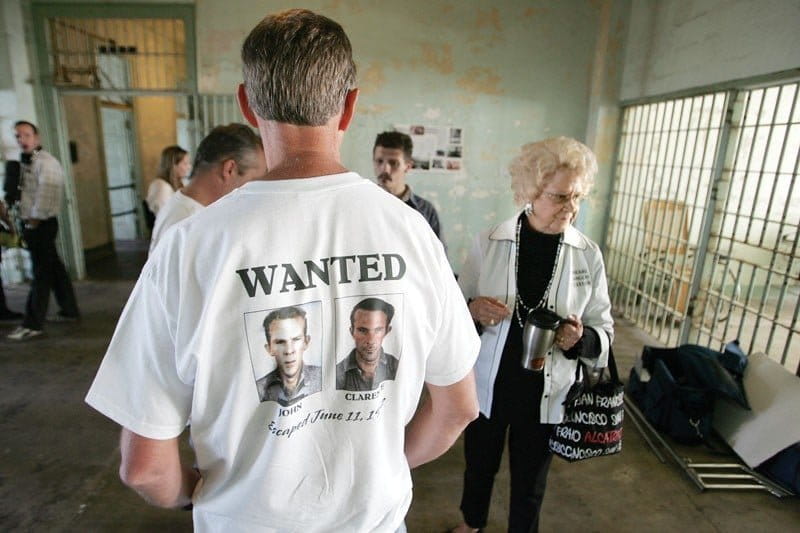
Not Consistent
Combing The Bay
They searched the bay thoroughly but did not recover any bodies. However, they did find personal items floating in the water the next day. On the night of the escape, the water was pretty cold at 50 to 54 degrees. The San Francisco Bay is cold at any given time of the year. The experts said that an adult male would only survive 20 minutes before his body gave up. The escapees would not have been prepared for the cold water because the officials made sure to keep the water warm in the showers.
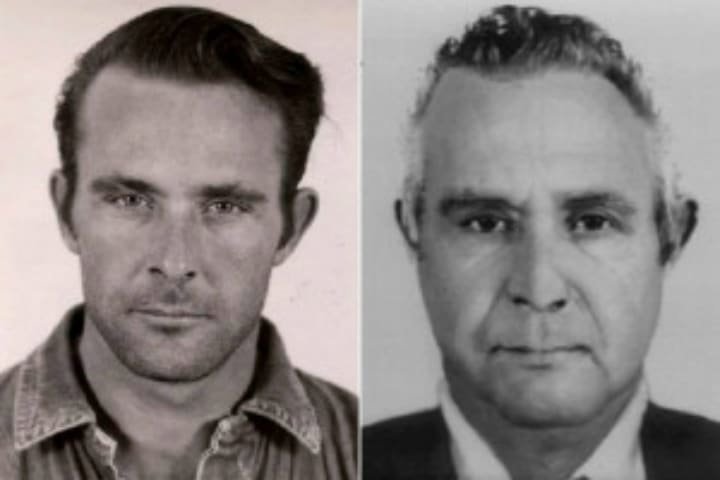
Combing The Bay
Different Verdicts
The FBI finally closed the investigation 17 years later. On the 31st of December in 1997, they arrived at the conclusion that the three men met their doom in the San Francisco Bay. However, the US Marshals did not do that. In 2009, the Deputy US Marshal told NPR, “There’s an active warrant, and the Marshals Service doesn’t give up looking for people.” Moreover, there was more reason to believe they survived.
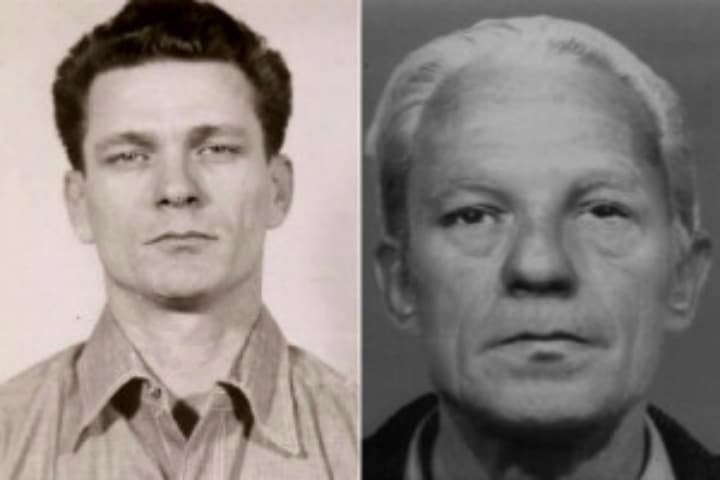
Different Verdicts
The Current Flow
A month after the escape, they found a body around by a Norwegian cargo ship around 17 miles from the Golden Gate Bridge. The body was dressed in clothes similar to the prison uniforms in Alcatraz. However, the filing of the report took some time, and the body was not recovered. In 2014, researchers analyzed the flow of the currents the night of the escape. Their findings revealed that if they sailed out by midnight, there was a good chance they would have made it to the shore and survived!
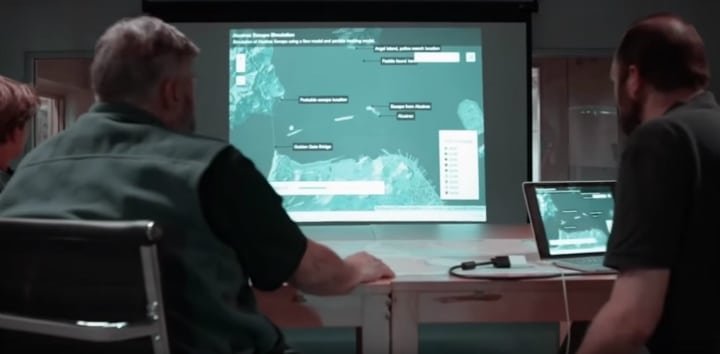
The Current Flow
Key Evidence
In 2015, the History Channel released a documentary that supported the theory that the Anglin brothers survived. Their family received a signed Christmas card with handwriting that matched the brothers’ penmanship. Sadly, they could not determine the date it was delivered. The family also surrendered a key piece of evidence. They had a picture of the brothers in Brazil dating back to 1975! Forensic experts said it was “more than likely” to be Clarence and John Anglin.

Key Evidence
A Deathbed Confession
There was another evidence supplied by Robert, one of the Anglin siblings. He confessed that he got in touch with Clarence and John from 1963 to 1987, although they later lost contact. The Anglin family did not look for their brothers in Brazil since the escape had still been an active Interpol investigation. They knew that they would suffer serious repercussions if they located their siblings.
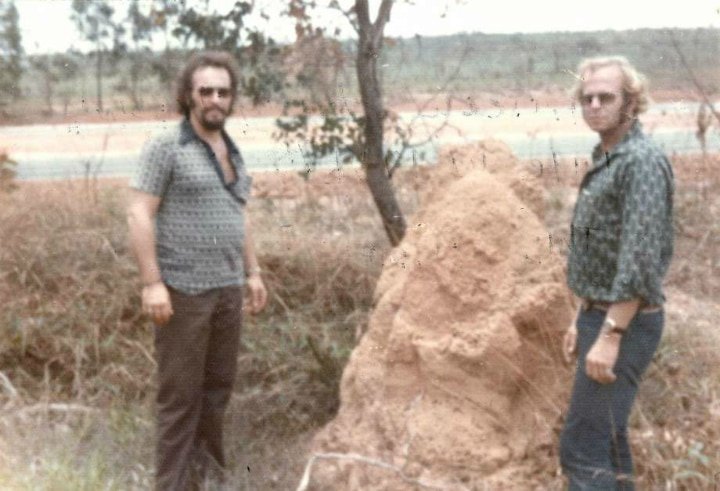
A Deathbed Confession
A Shocking Letter
In January 2018, the famous Alcatraz escape made its way to the headlines once again. The FBI announced its plan to reopen the case. Why did they decide to give the cold case another chance? Apparently, they received new evidence. In 2013, the San Francisco Police Department received a letter from a man calling himself John Anglin. No one knows why it only came to light five years later.
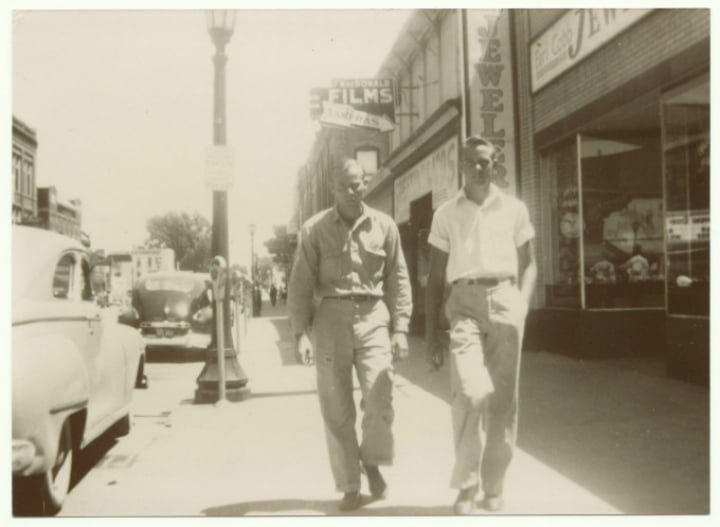
A Shocking Letter
His Confession
The letter starts off, “My name is John Anglin. I escaped from Alcatraz in June 1962 with my brother Clarence and Frank Morris. I’m 83 years old and in bad shape. I have cancer. Yes we all made it that night but barely!” The author went on, “Frank passed away in October 2008. His grave is in Argentina under another name. My brother died in 2011.” Where was he now and why did he write this?
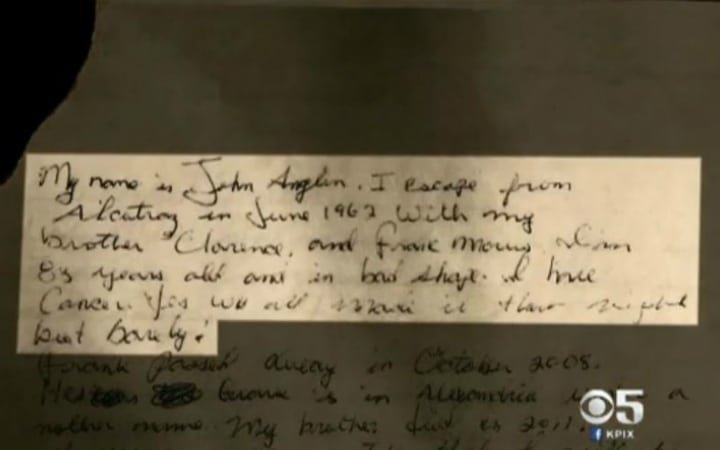
His Confession
Where He Went
The letter that was supposedly written by John Anglin revealed where they had been all this time. The letter said, “This is the real and honest truth. I could tell you that for seven years of living in Minot, North Dakota and a year in Fargo, North Dakota until 2003”. There were incomprehensible bits, but a BBC report interpreted that Anglin lived in Seattle “for most of my years after the Escape.”

Where He Went
Too Close For Comfort
This letter revealed that John Anglin was supposedly “Living in Southern California now.” It was hard to believe that this fugitive was allegedly living only several hours away from San Francisco. The person who wrote this letter was very ill and clearly desperate for help, even if it meant serving jail time. Could it really be from John Anglin? At the end of the letter, the person offered the authorities a deal…
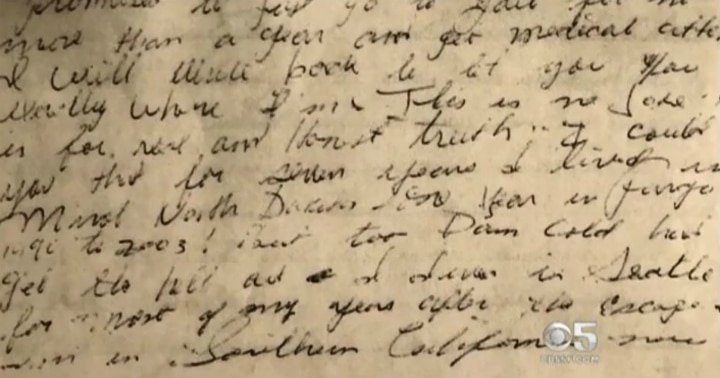
Too Close For Comfort
His Offer
The letter ended on this note: “If you announce on TV that I will be promised to first go to jail for no more than a year and get medical attention, I will write back to let you know exactly where I am. This is no joke…” The authorities decided to investigate the letter some more before even considering the deal. They wanted to check if it was authentic, so they ran it through an intensive analysis.
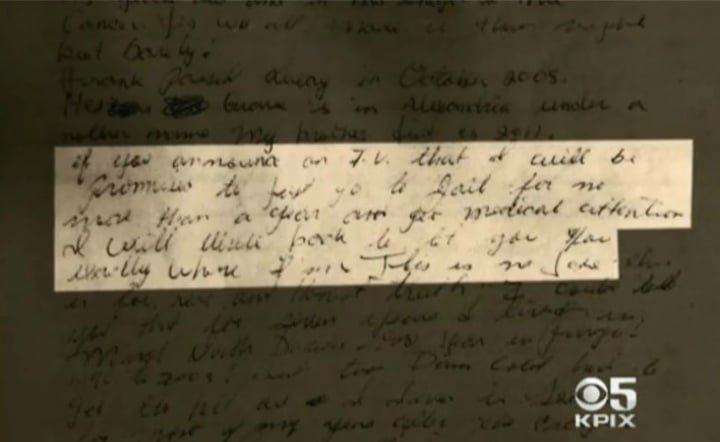
His Offer
The Conclusion
The US Marshals turned it over to the FBI, who ran tests on this piece of paper. They dusted for fingerprints, looked for DNA traces, and performed handwriting analysis. What did they think? KPIX, the San Francisco CBS affiliate, published the letter and discussed the investigation. It said that “the FBI’s results were inconclusive.” A security expert clarified what the FBI meant by that – it “means yes, and it means no, so this leaves everything in limbo.”
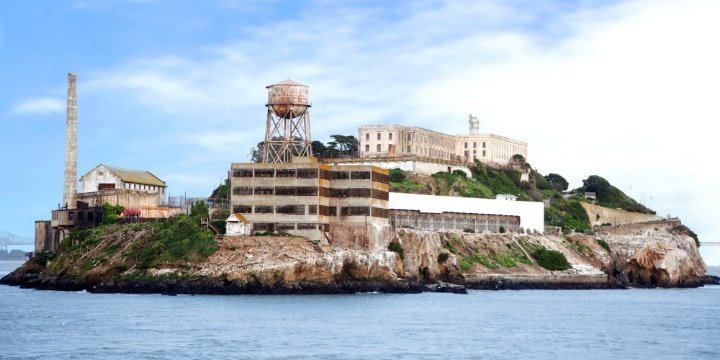
The Conclusion
Different Opinions
If you ask the US Marshals, they will tell you that “it is possible” that the escapees survived. However, a representative called the legitimacy of the letter into question during an interview with The Washington Post. Here is an excerpt from the article: “the Marshals Service has continued to investigate leads and said it will do so until the men are proven deceased, or until they turn 99.” Meanwhile, this was what the FBI said: “For the 17 years we worked on the case, no credible evidence emerged to suggest the men were still alive, either in the U.S. or overseas.”
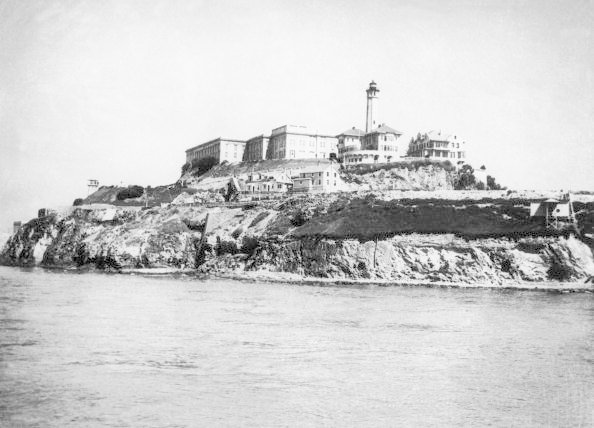
Different Opinions
Meet Jim Albright
Jim Albright had been the last guard to leave the prison. In March 2018, he was interviewed by ABC 7 to commemorate the 55th year the prison has been closed. He had been employed by Alcatraz when it happened. This was what he had to say about the great escape: “It depends on whether you’re talking to me or you’re talking to their mother. I believe they drowned, I really do.” He believed that the person behind the letter was some sick man in need of treatment who resorted to desperate measures.
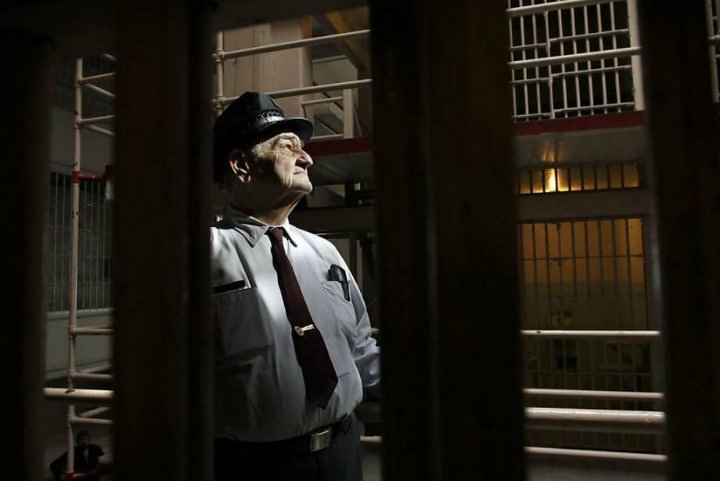
Meet Jim Albright
In This Day And Age
To this day, there is no definitive answer about whether John Anglin, Clarence Anglin, and Frank Lee Miller made it out of there alive. Law enforcement never revealed more details about the letter, so it remains a mystery if they looked for the writer. If the escapees are still alive, John Anglin would be 86 years old, Clarence Anglin 87 years old, and Frank Morris 90 years old. Even though they would be old men now, keep in mind that they are wanted fugitives who will be held accountable until they reach 99.
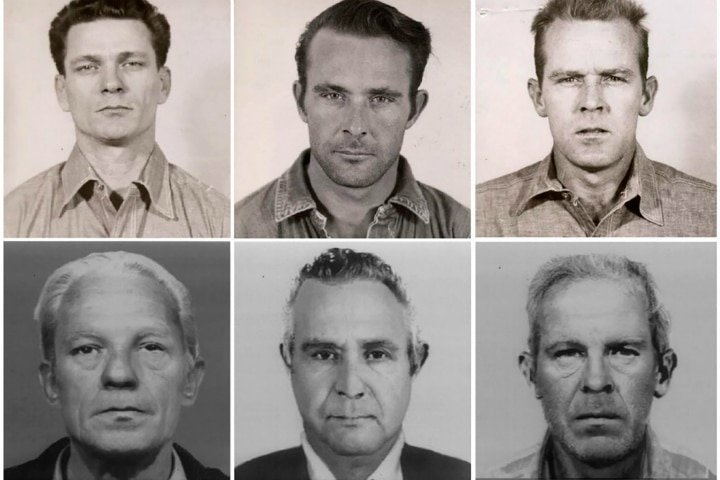
In This Day And Age
U.S. Marshals Opinion
The public only heard about the letter when KPIX published the story. The station got a tip from an anonymous source! The U.S. Marshals later released this statement: “There is absolutely no reason to believe that any of them would have changed their lifestyle and became completely law-abiding citizens after this escape.” This agency is the only one still actively on the case. Do you think they are right?
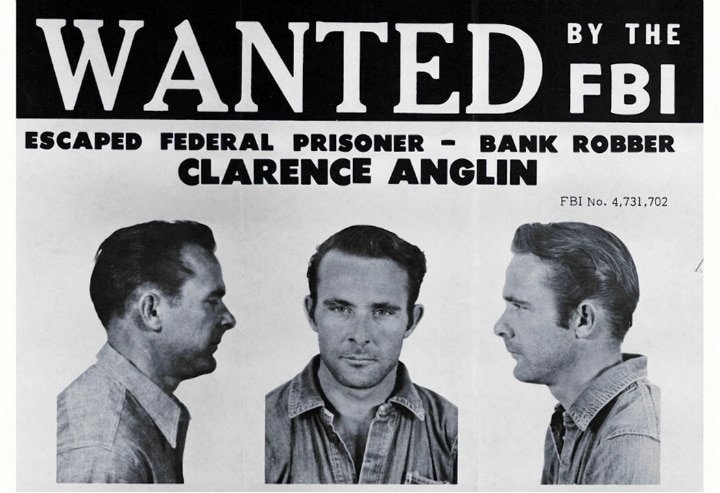
U.S. Marshals Opinion
The Alcatraz Yard
Here is a photo of the recreation yard in Alcatraz. Inmates were allowed to play baseball, handball, and other sports. Some liked to take in the fresh air during the couple of hours they were allowed to do so.

The Alcatraz Yard
Back To The Cellblock
This photo shows the prisoners as they made their way back to the solitary cells they stayed at. The date for this photo remains unknown, however.
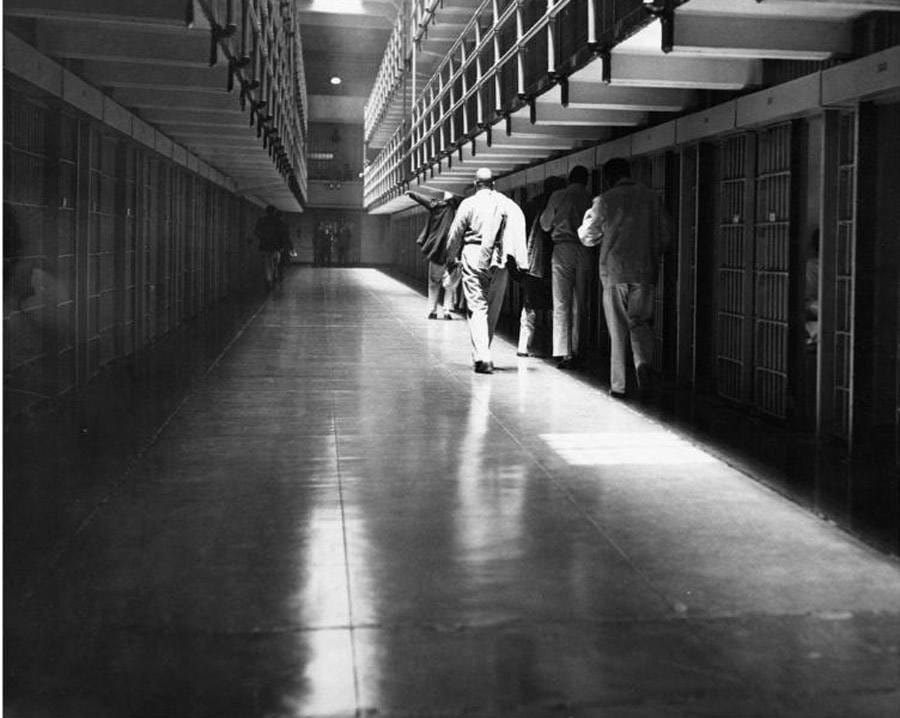
Back To The Cellblock
Meet Al Capone
This is the mugshot of Alcatraz inmate and gang leader Al Capone. During his tie at “The Rock”, he got stabbed by a fellow inmate using scissors from the barbershop. He got injured but ultimately survived. By 1939, he even finished his sentence.
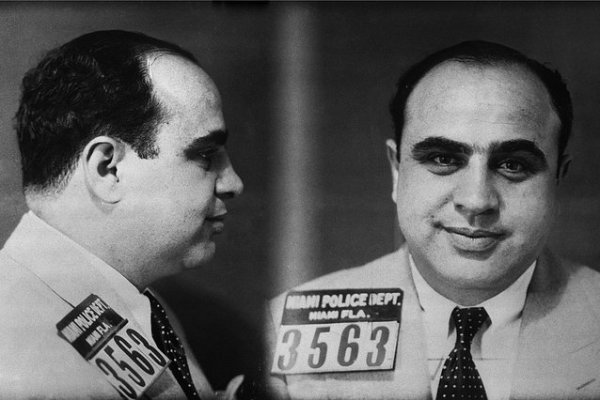
Meet Al Capone
A Snitch Box
This photo was taken in 1956. It shows a guard operating one of the “snitch boxes” in the prison. This was the nickname prisoners gave the portable and static boxes used to detect contraband and weapons.
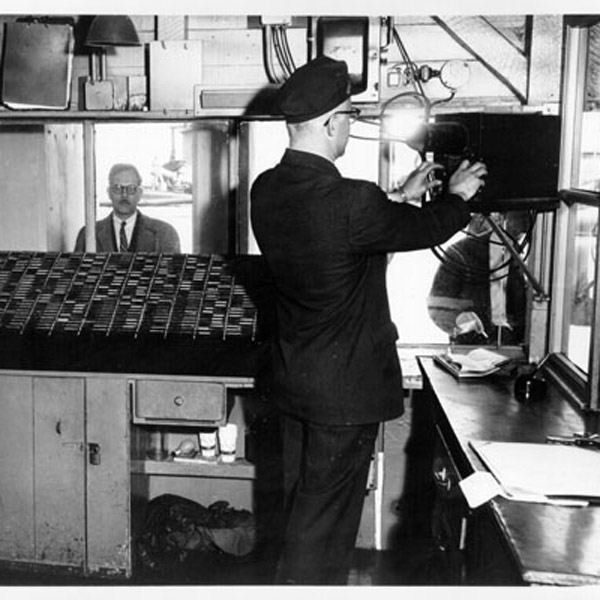
A Snitch Box
The Alcatraz Inmate Band
It was not all bad in Alcatraz. There were some good things about it. This shows the Alcatraz inmate band during rehearsals! The band has a guitarist, a trombonist, four sax players, and two trumpeters.
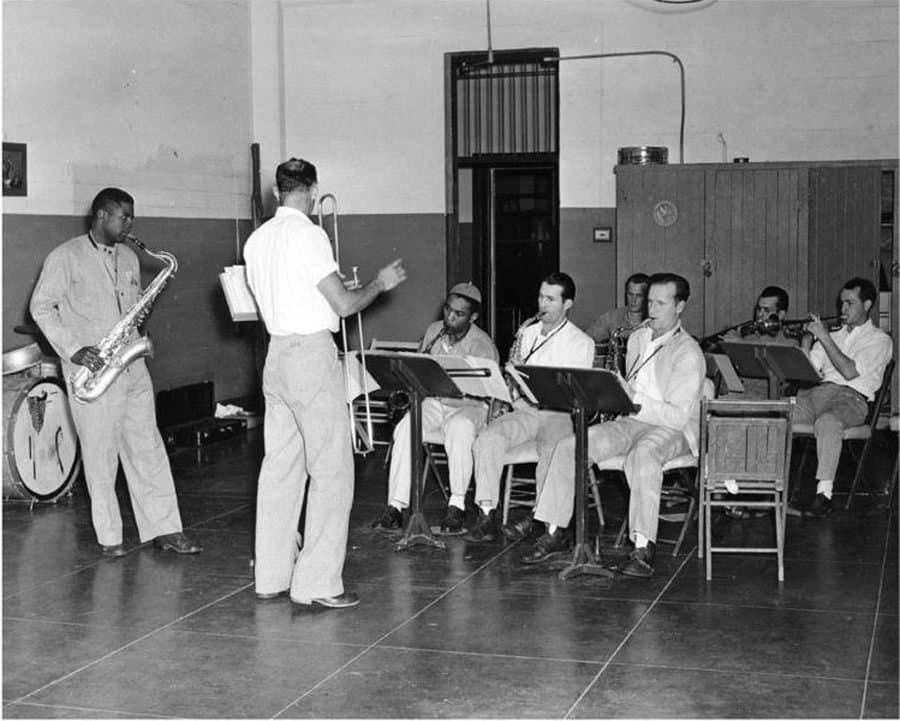
The Alcatraz Inmate Band
Another Perspective
This is what the view looked like from one of the guard stations. You can see cell blocks B and C here. The guards could keep an eye on block B (left) and block C (right).
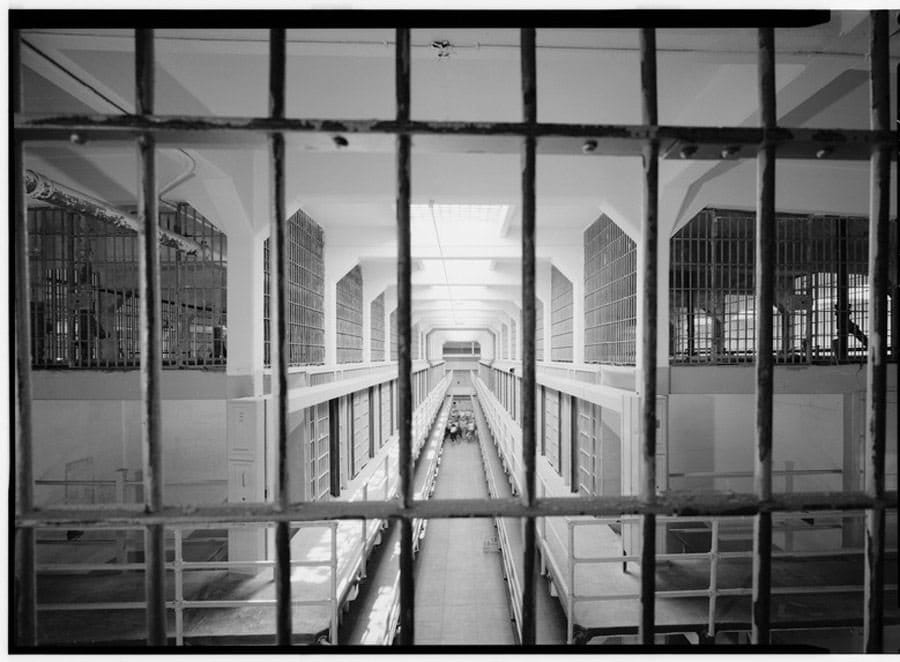
Another Perspective
Food Choices
We doubt that you will feel surprised to hear that there was not much diversity in the menu for the Alcatraz mess hall. This photo should give you an idea of what they served back in 1956.
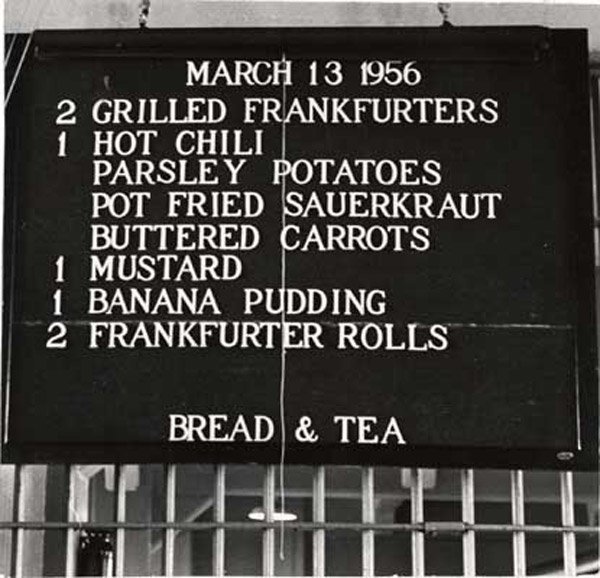
Food Choices
Time To Eat
This photo shows us what the mess hall was like in 1955. We already saw what kind of food they served, so this one gives us an idea of what mealtime was like in the Rock.
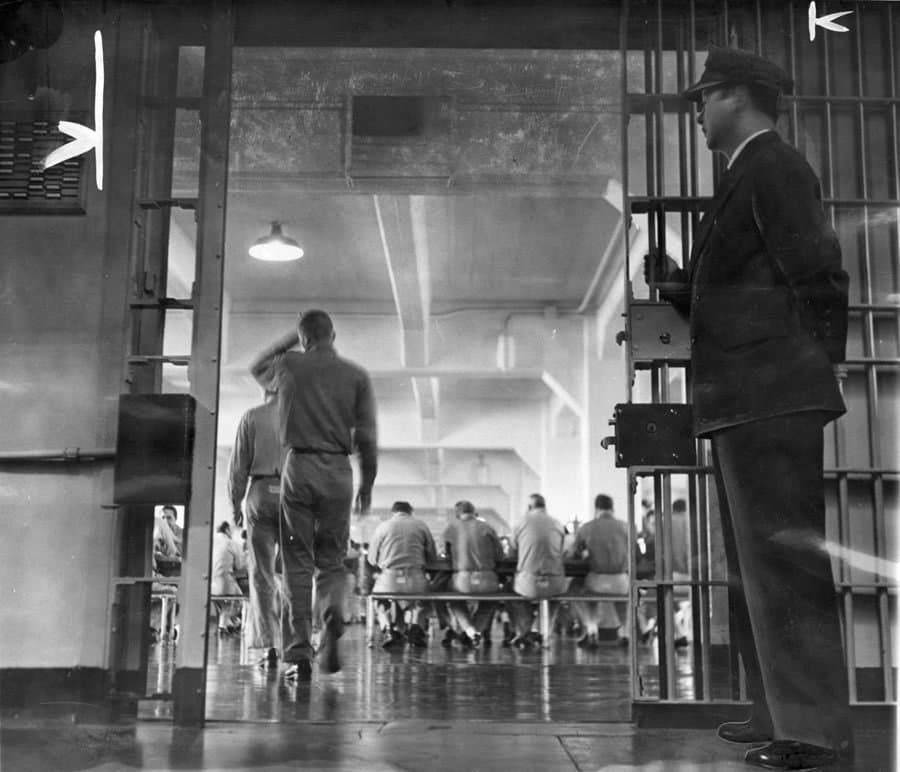
Time To Eat
Solitary Confinement Cell
This was what a solitary confinement cell looked like back in the day. Quite stark, isn’t it? It only came with a bed, a sink, and a toilet. Prisoners were alone with no light save for mealtimes.
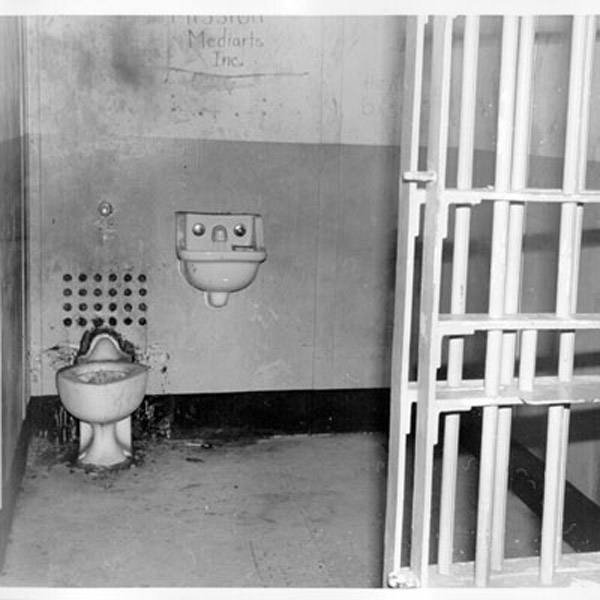
Solitary Confinement Cell
Baking Bread
Below, you can see an inmate baking bread in the kitchen at the prison. If you ask us, the loaves of bread look a little burned! We are sad to say that the date of this photograph remains unknown.
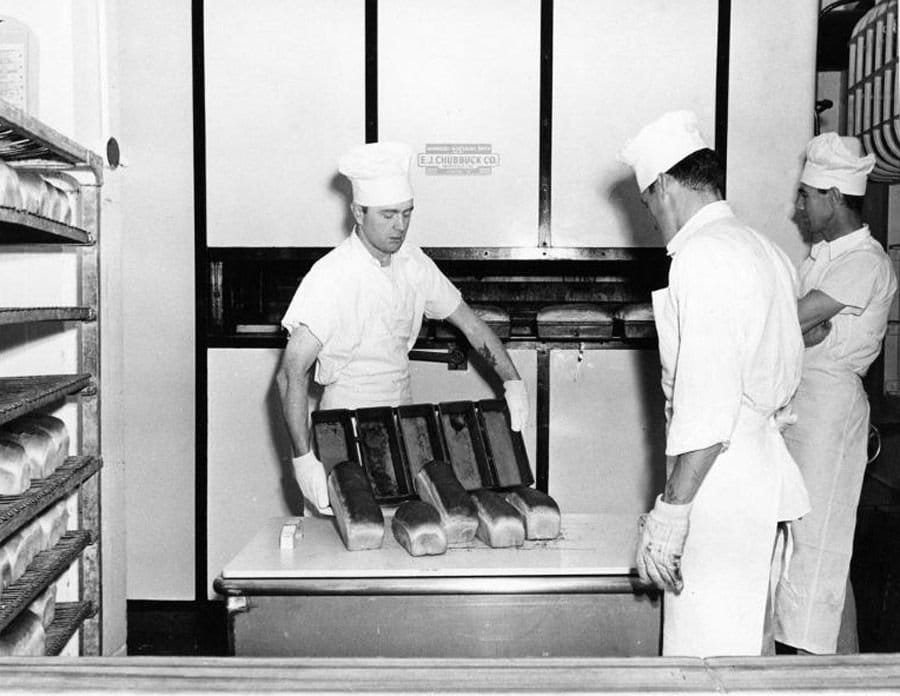
Baking Bread
Before It Was A Prison
Before they turned Alcatraz into a federal penitentiary, it was first used as a military garrison. This photo was taken in 1902. You can see ladies and officers sitting along the dock!
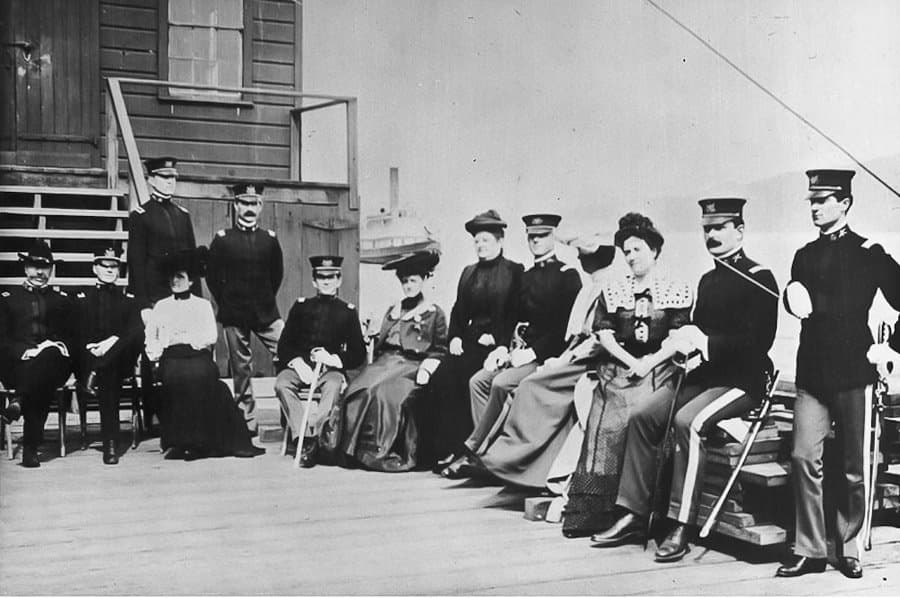
Before It Was A Prison
Waiting For Assignment
In 1902, military prisoners had to stand and wait for the assignments they had. This photo of the Rock was taken during its time as a military garrison, before it was converted into a federal penitentiary.

Waiting For Assignment
Making Them Work
To go with their prison sentences, the Alcatraz inmates had to work long hours of manual labor. Taken in 1955, this photograph shows prisoners doing their jobs by weaving cargo nets.
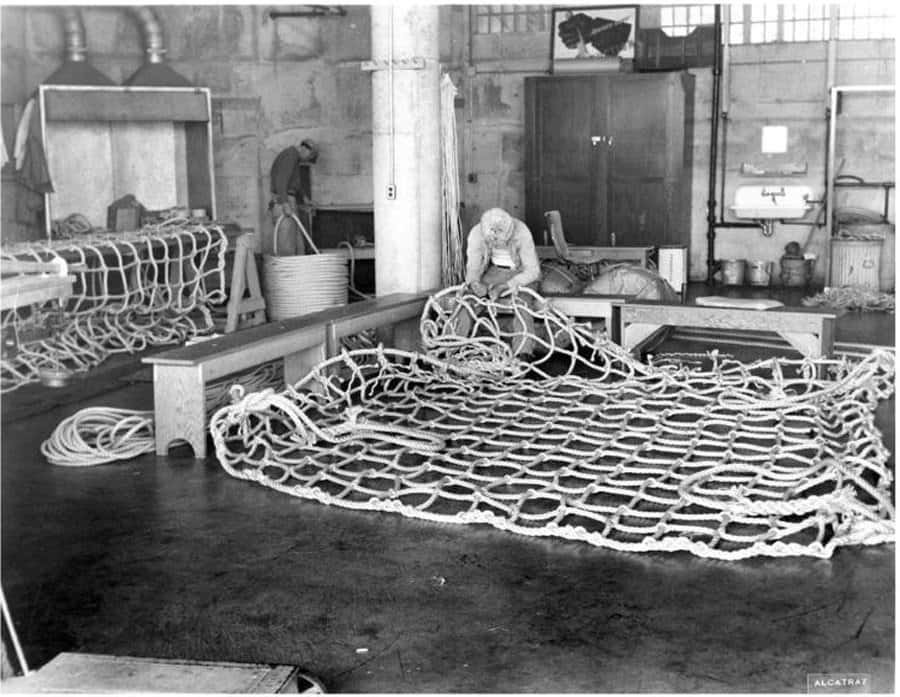
Making Them Work
Meet George Kelly Barnes
This is the mugshot of Alcatraz inmate and gangster George Kelly Barnes. He loved automatic weapons so much that he came to be known as “Machine Gun Kelly”. He spent 17 years in Alcatraz as inmate number 117. He was later transferred to Leavenworth Federal Penitentiary. There he died of a heart attack at the age of 59 in 1954.
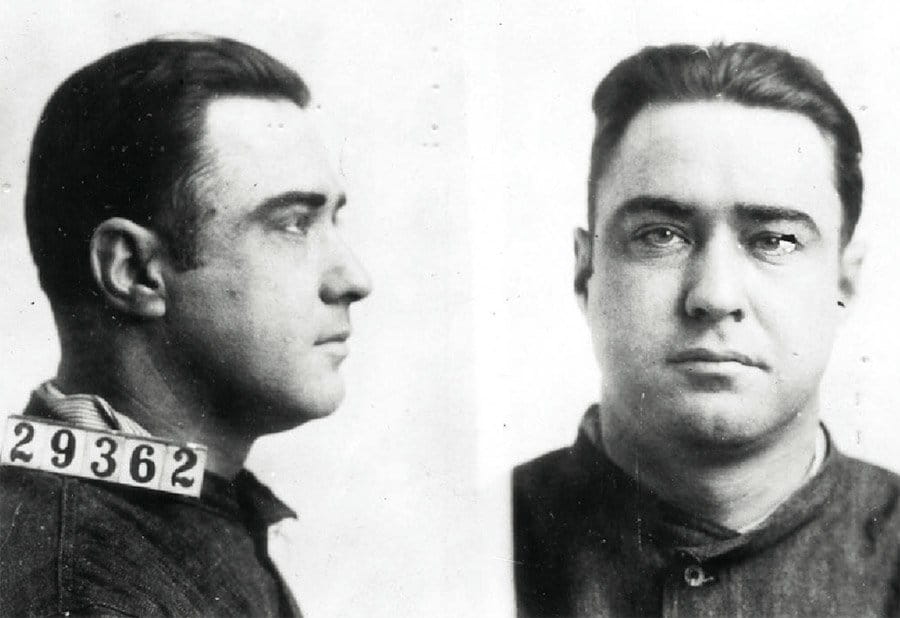
Meet George Kelly Barnes
Working At The Rubber Shop
Do you know what you are looking at? The photo below shows prisoners who were assigned to work in the rubber shop in Alcatraz. This photograph goes all the way back to 1955.
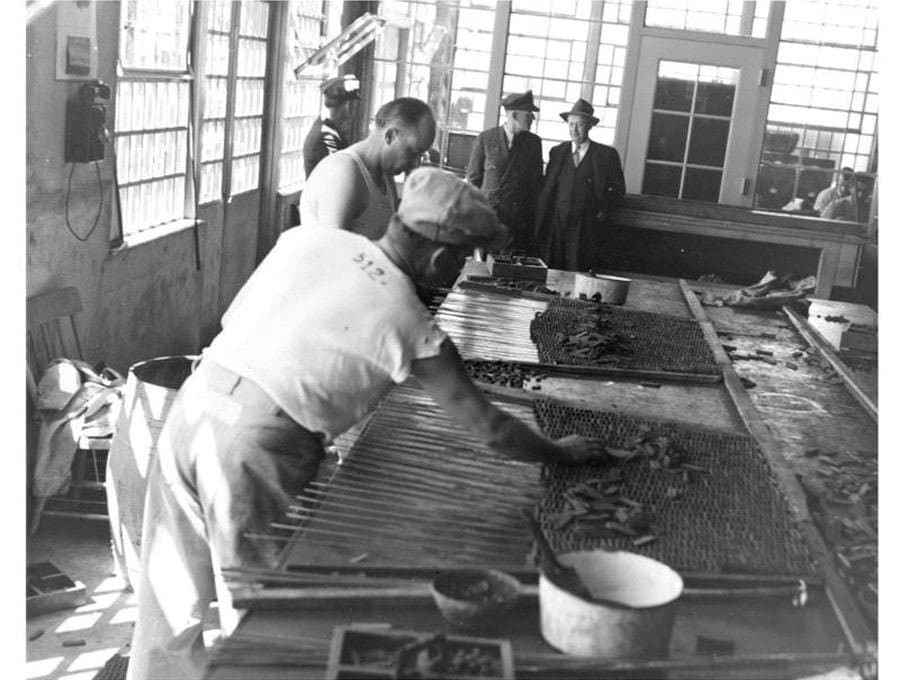
Working At The Rubber Shop
A Celebration
Meanwhile, this photo was taken in 1948. It shows a celebration at Alcatraz, which was a rarity back then. It was a retirement party for an Alcatraz warden called James A. Johnston. He was legendary because he was the first and the longest-running warden in Alcatraz history.

A Celebration
Learning New Things
During the incarceration of the inmates, they were encouraged to take up a trade or new skills. This would give them the chance to find a job and contribute to society upon their release. Taken in 1954, this photo shows inmates using sewing machines to make trousers!
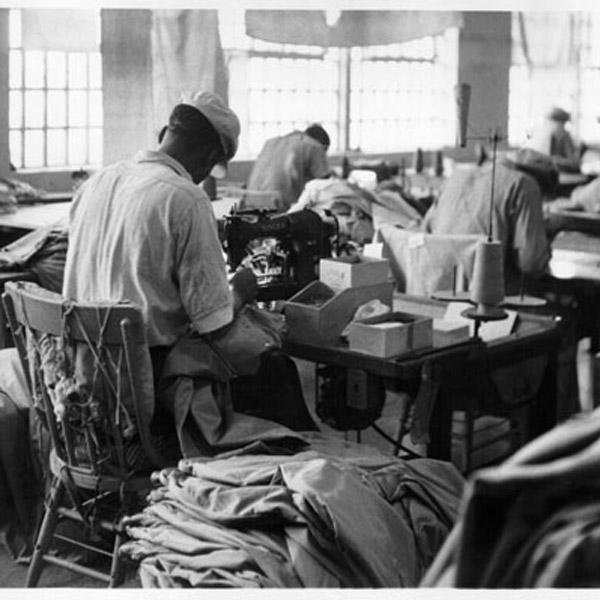
Learning New Things
Holiday Dinner
Taken on Christmas day one year, this photo shows a prison cook who cooked up a holiday meal for the inmates at the Rock. On that fateful day, they served a lot of special holiday treats!
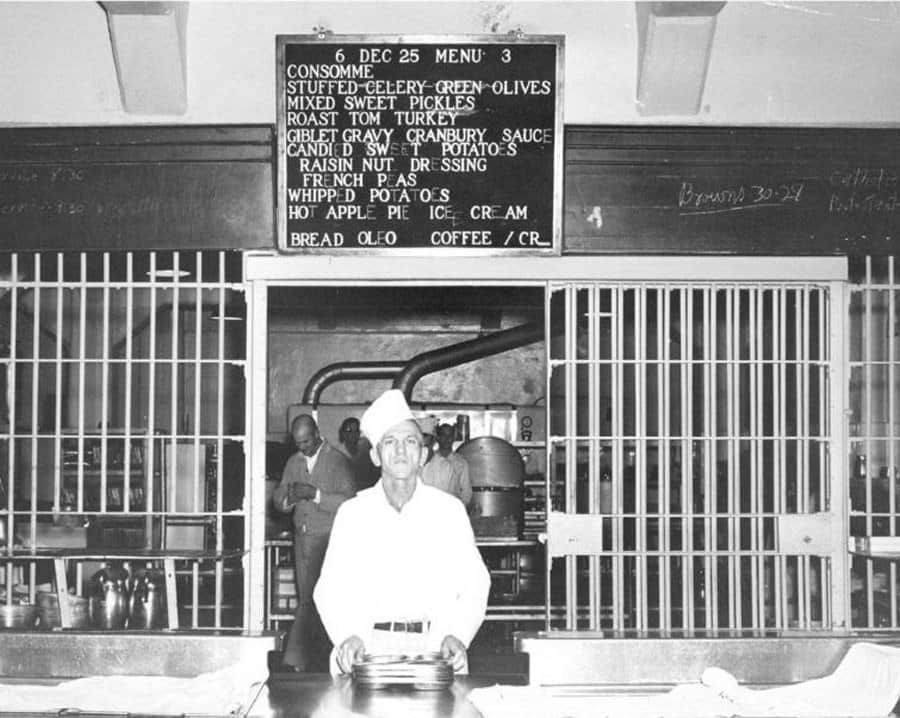
Holiday Dinner
Meet Arthur R. Barker
Dating back to 1963, this was the prison record that belongs to Arthur “Doc” Barker. He was the son of Ma Barker as well as a member of the “Bloody Barkers” gang. He was shot and killed during an escape attempt of his own.
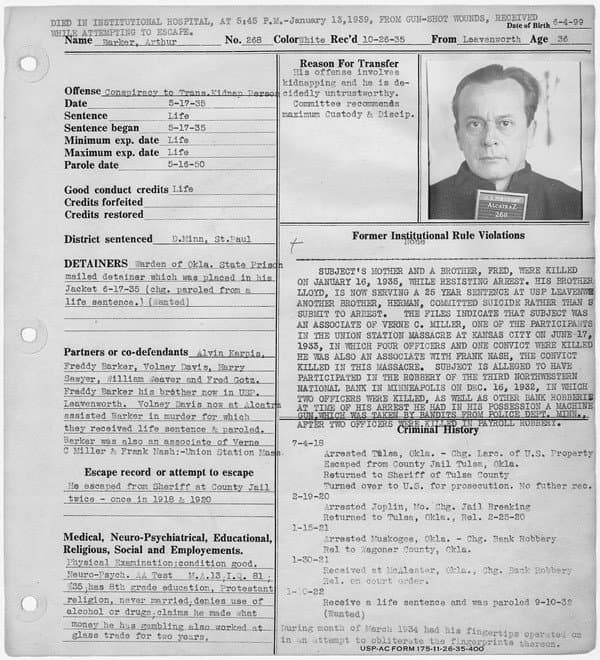
Meet Arthur R. Barker
The Battle of Alcatraz
The men below are Clarence Carnes, Marvin Hubbard, and Bernard Paul Coy. They were three of four inmates who started a riot that went on to be known as “The Battle of Alcatraz”. It started after a prison break attempt and happened over three days. During the riot, Hubbard, Coy, two guards, and another inmate died.

The Battle of Alcatraz
Punished For It
The first photo shows Sam Shockley, while the man on the right is Miran Thompson. These photos were taken before they were incarcerated in Alcatraz. They sided with the riot leaders during the “Battle of Alcatraz”. They were executed for the part they played in the bloodshed.
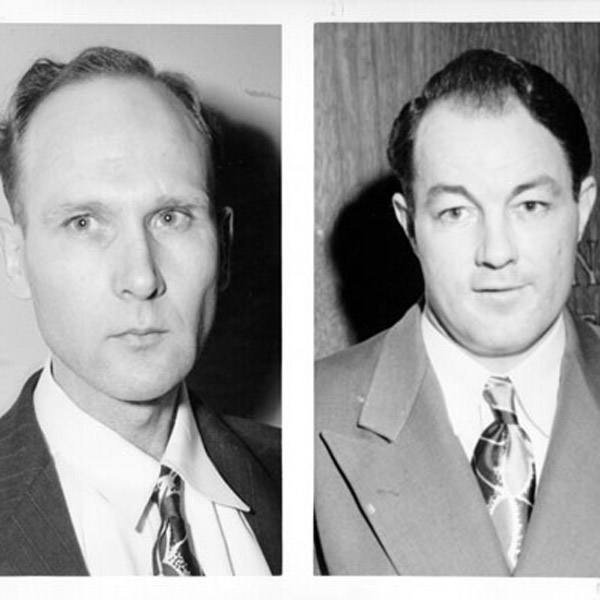
Punished For It
Meet C.L. Buckner
The riot was only quelled when two marine units led by C.L. Buckner came to help out. Taken in 1946, this is the man in question reading a newspaper story about the riot he helped take down.
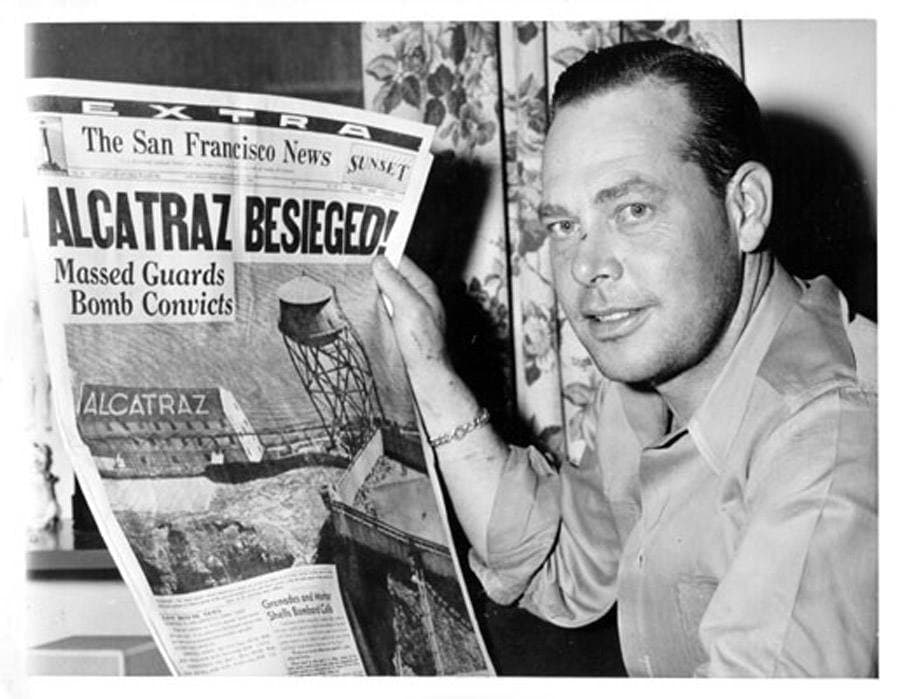
Meet C.L. Buckner
Meet Miran Thompson
This is the mugshot of another famous Alcatraz inmate. Miran Thompson was sentenced to 99 years in prison for murder and kidnapping. After the Battle of Alcatraz, he was held accountable for the part he played and awaited punishment in solitary confinement.
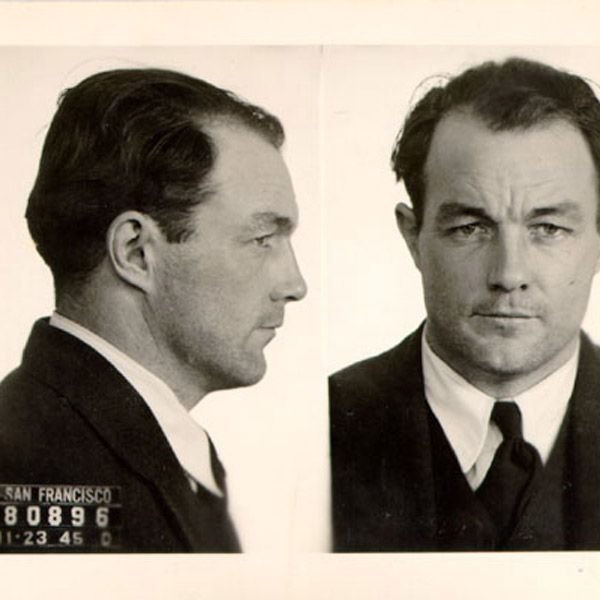
Meet Miran Thompson
Meet Albert Arsenault
This is a photo of Marine Major Albert Arsenault. He had been describing the experience he had when he helped quell the riot in the Rock. This incredible photo was taken in 1946.

Meet Albert Arsenault
Their Punishments
Here was photo if the would-be escapees who managed to survive the riot. They are Miran Thompson, Clarence Carnes, and Sam Shockley. In 1948, Thompson and Shockey were both sent to a gas chamber. Meanwhile, Carnes had a more lenient punishment and only got a life sentence.
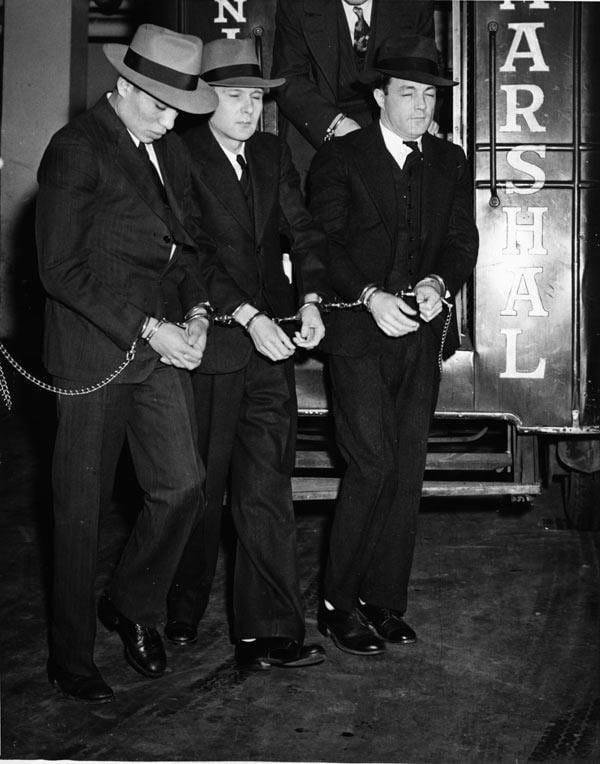
Their Punishments
Alcatraz Now
This photograph was snapped in 2017. It shows us what Alcatraz Island now looks like. It is no longer a prison but a tourist attraction that offers guided tours every single day!
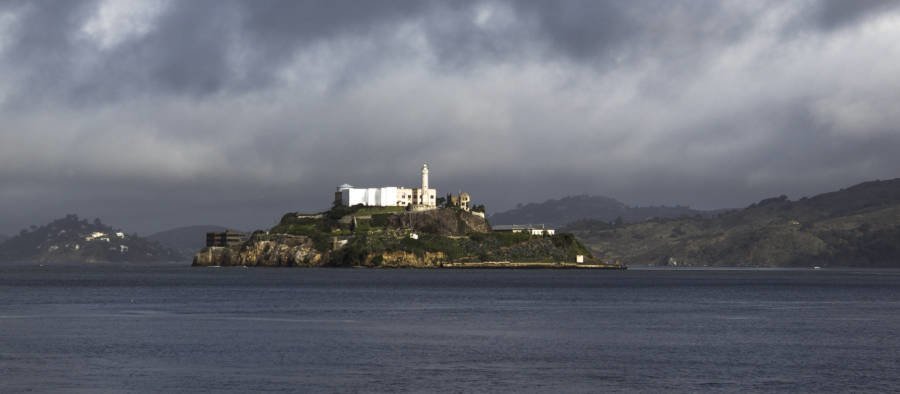
Alcatraz Now
